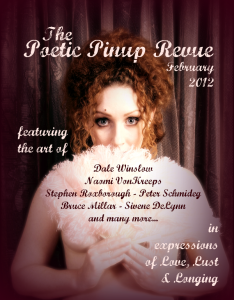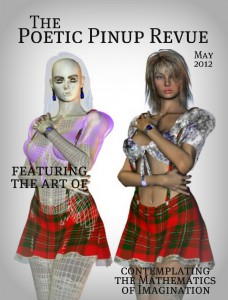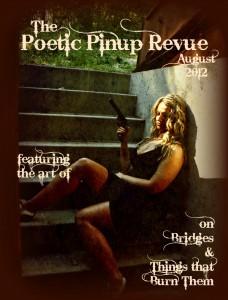Recently I’ve read two adventure stories which feature young protagonists thrown into desperate, life-and-death situations. I enjoyed both of them more than a little bit, and in both cases stayed up too late at night to see what happened next.
I finished Treasure Island last night, close on the heels of The Hunger Games
last night, close on the heels of The Hunger Games and I’ve been contemplating the two stories, and the progress of storytelling in general.
and I’ve been contemplating the two stories, and the progress of storytelling in general.
Perhaps the most obvious difference between the two is the complete absence of female characters in the older story. Of course, most of the adventure takes place on a ship, with pirates, and any attempt to insert a female character would have been completely artificial. I don’t think I need to go into detail. Perfectly natural, however, to have an early-teen boy along. That’s how things worked back then.
More interesting than the differences are the similarities. I’ve commented in the past on the obvious-when-you-read-it schism that marks the beginning of “modern literature”. After I set down Treasure Island I realized that adventure stories were already modern, long before literature caught up. But for some language differences, TI: Silver’s Deceit might have been written last year. Bring a mysterious man into an inn, make him ornery, throw a band of assassins at him, get some people killed, and you’re off the the races, story-wise.
Funny how many names I recognized. Long John Silver. Ben Gunn. The parrot that said “Pieces of Eight!”
One thing that Treasure Island did particularly well was to create a compelling bad guy. Long John Silver is crafty, conniving, charismatic, and a consummate liar. The crusty old salt who appeared at the beginning to kick the story off was more afraid of Silver than any other man. Long John was a planner, a saver; while his shipmates of previous escapades had squandered their loot, he had invested carefully. If all the pirates were as smart as he was, this outing would have been no contest. The story does not rely on Classic Bad-Guy Mistakes (which weren’t even classic back then), but rather John Silver has to adapt his plan to appease his impatient cohorts. Totally buyable.
Even with that, the good guys need plenty of luck to win the day. Our narrator, young Jim Hawkins, is the vessel of much of that good fortune. He gets lucky, there’s no doubt about that, but even my twitchy preposterometer was not terribly agitated. The pirates destroyed themselves; Jim was just in the right place to take advantage of it.
It was a lot of fun to read.
Moving ahead a couple of centuries, we have The Hunger Games. In this story we have a post-apocalyptic gladiator contest, fought by children. This is no Road Warrior world, however; there is still a central authority and in the capital at least, technology has not been lost.
The Bad Guy in the story is much more vague than in Treasure Island. Authority, you could call it. The contest is an annual exercise of power the capital inflicts on the outlying districts. The primary tool the rulers use to control the populace is hunger. There’s simply not enough to eat. Our heroine is a poacher, skilled in slipping outside the confines of her district and bringing back food. The local authorities are happy to look the other way.
I had a little problem with the districts set up in this story. Our heroine hails from District Twelve, which numbers some eight thousand souls. In all of North America there are twelve districts, plus the capital. Even with the almost-magic technology possessed by the capital, I can’t see them controlling the population of an entire continent when there is so much out there. If there was uninhabitable wasteland beyond the fences of the districts it might make sense, but there’s a whole damn continent teeming with dangerous-but-edible creatures. I invoke thermodynamics: there’s just too much pent-up need for the plenty of the open continent. That much pressure, you’re going to leak.
Maybe in future episodes we’ll learn about human enclaves outside the districts, and why they haven’t become so populous that they can simply overwhelm the capital. Maybe I’ll even buy it. But the burden of proof is on the writer’s shoulders.
She might pull it off. She’s done a good job so far pulling me in. It’s a really tricky thing, introducing us to a world the characters already know, and it is done pretty well here. The narrator can’t stop to fill us in on how society works; it’s told in first person to a presumed audience who already knows the score. However, there were times I felt like the author was teasing.
The core question of The Hunger Games: What do you do when you are compelled to kill someone you really like, and who likes you even more? The answer to that is the payoff of the story. From a story perspective the big win in Hunger Games is the culture that surrounds the brutal competition – the marketing of the contestants, and the gambling. Outside forces can influence the game, at terrific cost. We get a good feel for this even though our perspective is limited to a single contestant.
Treasure Island doesn’t really have a core question. Doesn’t really need one. It has a situation and some great characters, and it plays from there.
In Games there are also hints that the actions of our single contestant might have an effect on the world outside the arena. There is a piece of bread that is an indicator of something greater. And that’s pretty good writing right there. The sort of writing that is the luxury of the series writer.
A series, done right, provides a sequential set of individually satisfying stories that, taken together, become something much more. Based on the first installment, Hunger Games almost hit that, but at the end devoted an extra chapter or two to setting up not the next story but the spunky-herione-must-have-two-viable-suitors-she-can’t-choose-between crap. Cheese Louise. I was totally along for the ride until I got that open declaration that this was going to devolve into Twilight.
I’ll say this for Games: There were a couple of points where it punched me square in the gut. Good people die in Treasure Island, die hard and die well, but it affected me more in the modern adventure. I have a theory that I won’t expand upon here that our perspective on death has changed dramatically in the last hundred years (penicillin might be the breakpoint), and so we write about death differently. Nobody says “it’s a good day to die” and really means it anymore.
Another difference between modern and older adventure stories for your adults: in more recent stories the young protagonist does everything. Situations are built so the hero does not get support from adults, only from a select handful of peers. Were Treasure Island written today, Jim would not have relinquished control of the treasure map to the local authority figure, and would not have settled for a mere share of the treasure. Bringing in adults makes the subsequent action a lot more believable. Sometimes in modern stories authors kill themselves (and their stories) to keep adults off the “good guy” side of the ledger.
There have been some changes in the art of the adventure story over the last centuries, not all for the better, but by and large an adventure is still an adventure, and good adventures start with action, have action in the middle, and then end with action. I like those.
Note: if you use the above link to buy this book (or a Kindle , or a new car), I get a kickback. You should also know that if you have an electronic reading device, you can download Treasure Island for free.
, or a new car), I get a kickback. You should also know that if you have an electronic reading device, you can download Treasure Island for free.
 2
2
Sharing improves humanity:







